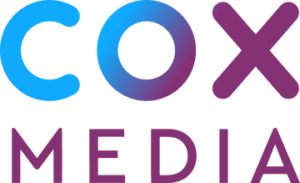Why Programmatic Can be the Secret Ingredient Behind Successful TV Advertising [Breaking News]
Online advertising products no longer have the exclusive upper hand with data and insight. With programmatic technology, TV advertisers can now get a more granular look at who’s tuning in and out.
Respected brand names like Oreo, for example, are testing the savvy new marketing medium. The 103 year-old cookie company trail blazed this year’s Super Bowl by purchasing the first game time ad through programmatic technology.
So what’s the appeal for other businesses? Knowledge is power and with programmatic, corporations and agencies can make smarter decisions about what TV ads are shown to which audience faster. This is beneficial from an operational standpoint and increases the odds of making a sale.
Quality versus Quantity
In general, businesses are becoming less concerned with how many consumers view their messages, and more concerned with whether the right consumers are engaged. In summary, quality trumps quantity. Going back to Oreo, while its parent company Mondelez purchased the first Super Bowl TV ad using programmatic technology, according to AdWeek, the ad was specifically shown in Erie, Pennsylvania to roughly 100,000 people.
The beauty behind programmatic advertising is that it’s designed to automate targeted messages to reach highly targeted groups of people. In other words, say your business or client manufactures golf clubs, purchasing a TV ad using programmatic technology would allow you to reach an audience of 500,000 male golf fans aged 25 to 35 who want to buy exactly what you’re selling.
Segmentation Leads to Sales
When executed correctly, creating and placing ads with specific segments in mind can improve conversion rates. Need proof? Just look at the example set forth by Adlens and its agency True North.
True North leveraged programmatic technology to run a 30-second TV spot for Adlens that would reach a target demographic of 45 year-olds with an income of at least $25,000. Within the brief timeframe that the ad ran, Adlens sold more than 3,000 units and saw a 700 percent increase in visits to its website.
A Marketplace of Efficiency
Beyond supplying CMOs and agencies with greater segmenting capabilities and audience insight, programmatic technology helps eliminate inefficiency caused by outdated and manual TV ad buying and selling processes.
Historically, TV ads sales took months of planning and any type of performance reporting occurred weeks after an ad aired. With programmatic technology, TV ad buying and selling is beginning to mirror the instant flexibility digital video offers.
In general, programmatic transactions occur in the cloud, which means buyers and sellers experience greater transparency and real-time access to data, inventory, proposals and performance measurement. Additionally, new programmatic tools are built to integrate with existing business solutions, like accounting software, to ensure optimal efficiency.
What Does The Future Hold?
While programmatic is certainly taking the digital world by storm, eMarketer predicts U.S. advertisers will spend $14.88 billion on programmatic digital display advertising this year; TV is beginning to gain traction in its own respect. Even though less than 1 percent of TV ad spend in the US is currently traded programmatically, IDC expects this to grow to 7 or 8 percent by 2017. Confidence in the concept will continue as increasingly large brands, Mondelez, look to pursue innovative and effective ways to reach consumers.
Source: AdWeek.com’s LostRemote Blog
Connect with a Marketing Expert
Share Post On Social
Related Insights
Connect With Your Local Marketing Expert
You know your business. We know advertising. Together, we can bring your business to more people. Contact a member of our team today. We’d love to help you grow.

